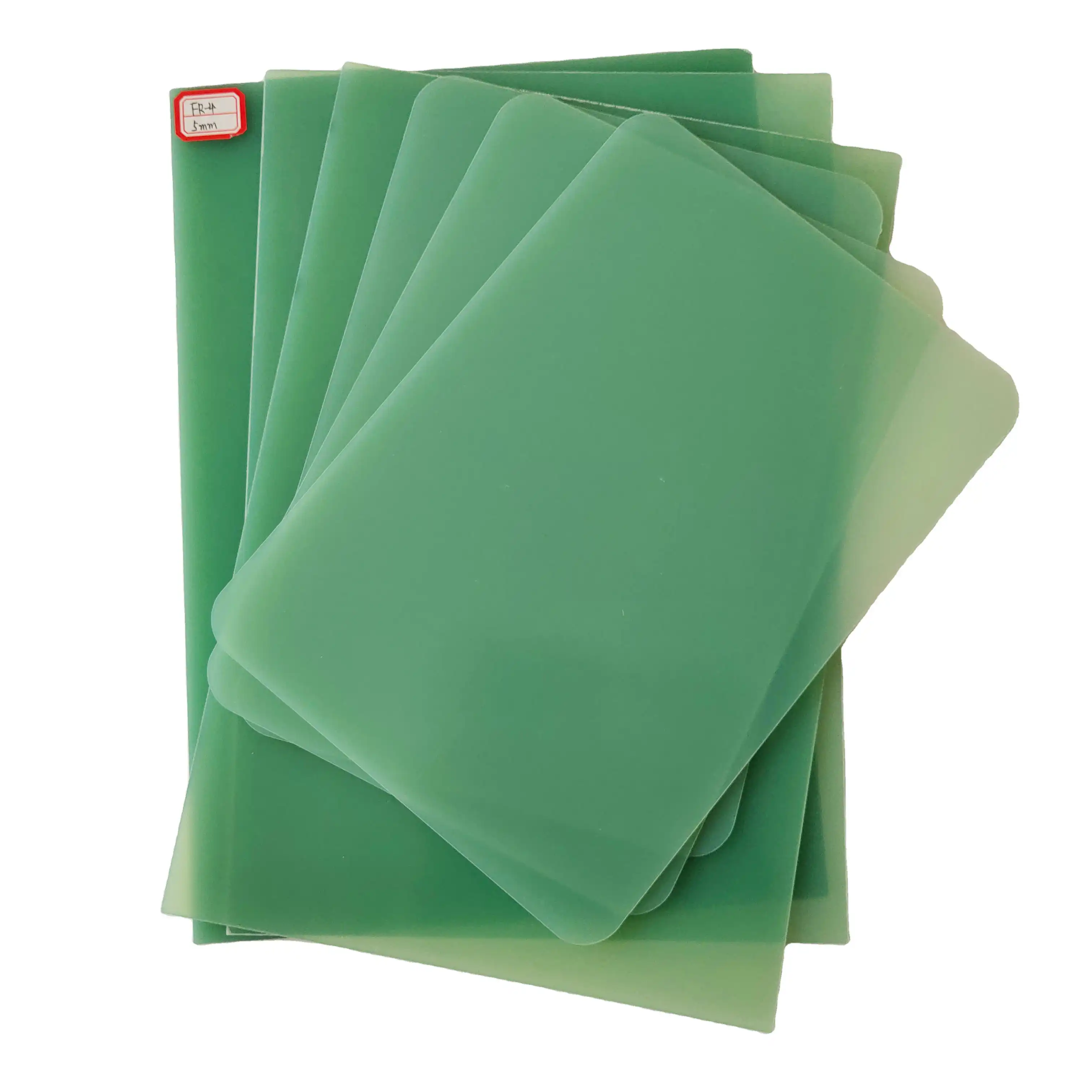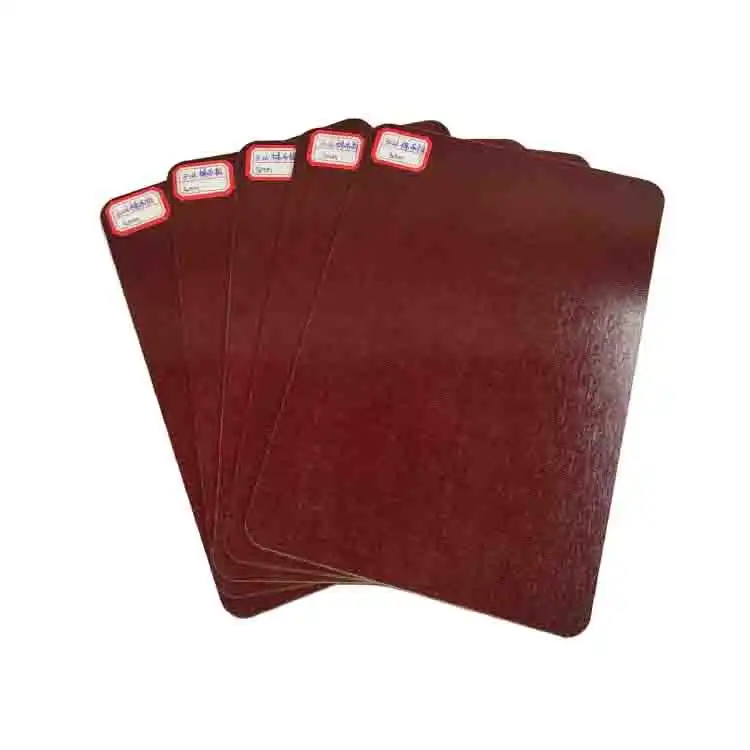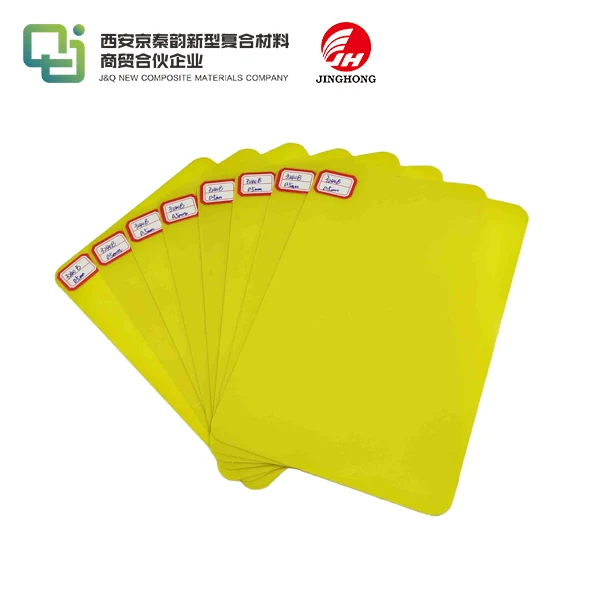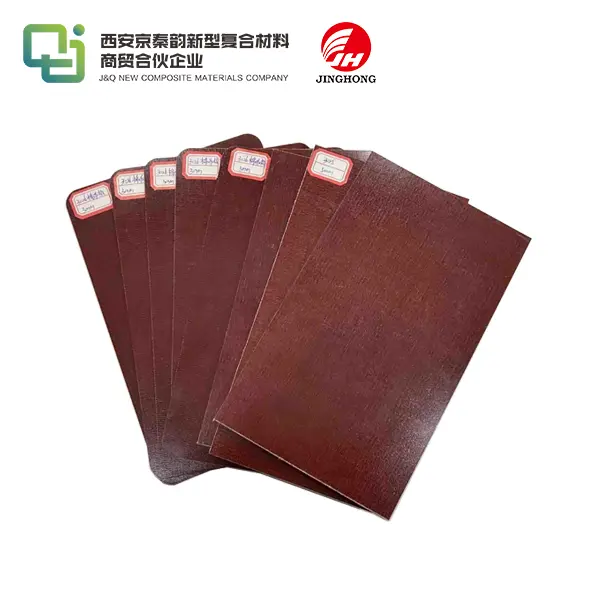FR4 Epoxy Sheet: Balancing Flame Retardancy and Dielectric Strength
2025-07-24 17:04:50
FR4 epoxy sheet represents a remarkable achievement in materials engineering, seamlessly combining exceptional flame retardancy with superior dielectric strength. This unique balance makes it an indispensable material across numerous industries, from electronics manufacturing to aerospace applications. The material's ability to resist combustion while maintaining excellent electrical insulation properties stems from its sophisticated glass-reinforced epoxy resin composition. Engineers and manufacturers worldwide rely on FR4 epoxy sheets because they offer consistent performance under demanding conditions, providing both safety through flame resistance and reliability through high dielectric strength, making them the preferred choice for critical applications.
Understanding the Composition and Manufacturing Process of FR4 Epoxy Sheets
The Molecular Architecture Behind FR4's Unique Properties
FR4 epoxy sheet derives its exceptional characteristics from a meticulously engineered combination of woven fiberglass cloth and flame-retardant epoxy resin. The fiberglass reinforcement provides mechanical strength and dimensional stability, while the epoxy matrix delivers chemical resistance and electrical insulation. The flame-retardant additives, typically brominated compounds, integrate seamlessly into the polymer structure without compromising the material's dielectric properties.
The manufacturing process begins with impregnating fiberglass cloth with liquid epoxy resin containing carefully calibrated flame retardants. Multiple layers of this pre-impregnated material, known as prepreg, are stacked and subjected to controlled heat and pressure in large industrial presses. This process, called lamination, creates a homogeneous sheet where the resin fully encapsulates the glass fibers, eliminating air pockets that could compromise electrical performance.
Quality Control Measures During Production
Manufacturing facilities implement rigorous quality control protocols throughout the production cycle. Each batch of raw materials undergoes comprehensive testing to verify chemical composition and purity. During lamination, precise temperature and pressure monitoring ensures optimal resin flow and cross-linking, which directly impacts both flame retardancy and dielectric strength.
Advanced testing equipment evaluates the finished FR4 epoxy sheets for various parameters including dielectric constant, dissipation factor, and flame resistance rating. Manufacturers employ specialized instruments like impedance analyzers and flammability testing chambers to verify that each sheet meets stringent industry standards. This meticulous attention to quality control guarantees consistent performance across production batches.
Customization Options for Specific Applications
Modern manufacturing techniques allow for significant customization of FR4 epoxy sheet properties. Thickness variations range from ultra-thin 0.1mm sheets for flexible circuit applications to robust 50mm plates for heavy-duty electrical insulation. Manufacturers can adjust the glass-to-resin ratio to optimize either mechanical strength or electrical properties based on specific application requirements.
Surface treatments represent another avenue for customization. Some FR4 epoxy sheets receive special coatings to enhance adhesion for subsequent processing, while others undergo surface texturing to improve heat dissipation. The ability to tailor these characteristics makes FR4 adaptable to diverse industrial needs while maintaining its fundamental balance of flame retardancy and dielectric strength.

Technical Performance Characteristics and Testing Standards
Quantifying Flame Retardancy Performance
FR4 epoxy sheet's flame retardancy is evaluated through standardized testing protocols, with UL94 V-0 rating being the most widely recognized benchmark. This classification indicates that the material self-extinguishes within 10 seconds after flame removal and produces no flaming drips. The mechanism behind this performance involves the flame retardants releasing halogen radicals that interrupt the combustion chain reaction.
Temperature resistance extends beyond simple flame exposure. FR4 maintains structural integrity at continuous operating temperatures up to 130°C, with some specialized grades tolerating even higher temperatures. The glass transition temperature, typically around 135-170°C depending on the specific formulation, marks the point where the material begins to soften. This thermal stability ensures reliable performance in applications ranging from power electronics to automotive systems.
Thermal conductivity measurements reveal another crucial aspect of FR4's performance. While primarily valued for electrical insulation, the material's thermal properties significantly impact its suitability for various applications. Standard FR4 exhibits thermal conductivity around 0.3-0.4 W/m·K, though specialized formulations can achieve higher values for improved heat dissipation in power electronics applications.
Dielectric Strength and Electrical Properties
The dielectric strength of FR4 epoxy sheet typically ranges from 20-28 kV/mm, making it exceptionally effective at preventing electrical breakdown. This property remains stable across a wide frequency range, from DC applications to high-frequency circuits operating in the gigahertz range. The material's dielectric constant, usually between 4.2-4.8 at 1 MHz, provides predictable electrical behavior essential for circuit design.
Surface and volume resistivity measurements further demonstrate FR4's electrical insulation capabilities. Surface resistivity values typically exceed 10^12 ohm-cm under standard conditions, though humidity can reduce this value. Volume resistivity remains consistently high, often surpassing 10^14 ohm-cm, ensuring minimal current leakage through the material bulk.
Dissipation factor, another critical electrical parameter, measures energy loss in the dielectric material. FR4 exhibits low dissipation factors, typically 0.015-0.025 at 1 MHz, minimizing signal attenuation and heat generation in high-frequency applications. This characteristic proves particularly valuable in telecommunications equipment and high-speed digital circuits.
Environmental Resistance and Longevity
FR4 epoxy sheet demonstrates remarkable resistance to environmental factors that typically degrade insulating materials. Water absorption remains minimal, usually below 0.15% after 24-hour immersion, preserving electrical properties in humid conditions. Chemical resistance extends to most common solvents, oils, and mild acids, though strong bases can cause degradation over extended exposure.
UV radiation resistance varies depending on the specific formulation, with some grades incorporating UV stabilizers for outdoor applications. Mechanical properties like flexural strength and impact resistance remain stable over decades of service when properly applied. This durability translates to reduced maintenance costs and extended equipment lifespans.
Accelerated aging tests simulate long-term performance by subjecting FR4 samples to elevated temperatures, humidity cycling, and thermal shock. Results consistently demonstrate that properly manufactured FR4 epoxy sheets maintain their critical properties for 20-30 years under normal operating conditions, making them a reliable choice for permanent installations.
Applications Across Industries and Future Developments
Electronics and Circuit Board Manufacturing
The electronics industry represents the largest consumer of FR4 epoxy sheets, utilizing them as the substrate material for printed circuit boards (PCBs). The material's dimensional stability ensures precise registration of circuit traces during manufacturing, while its dielectric properties enable reliable signal transmission. Multi-layer PCBs leverage FR4's consistent thickness and flatness to create complex interconnected circuits with minimal signal interference.
Power electronics applications particularly benefit from FR4's balanced properties. Inverters, motor drives, and power supplies require substrates that can withstand high voltages while dissipating heat effectively. FR4's flame retardancy provides an additional safety margin in these high-energy applications, preventing catastrophic failures from spreading beyond the immediate fault location.
Consumer electronics manufacturers appreciate FR4's cost-effectiveness combined with reliable performance. Smartphones, tablets, and laptops all contain FR4-based circuit boards that must operate reliably despite exposure to varying temperatures, humidity, and mechanical stress. The material's proven track record in these demanding applications demonstrates its versatility.
Industrial and Infrastructure Applications
Electrical switchgear and distribution equipment extensively utilize FR4 epoxy sheets for insulation barriers and structural components. The material's arc resistance and mechanical strength make it ideal for circuit breaker components, bus bar supports, and transformer insulation. These applications demand materials that maintain performance over decades while exposed to electrical stress and environmental variations.
Railway and transportation systems incorporate FR4 components in signaling equipment, power distribution systems, and control panels. The material's vibration resistance and stable electrical properties ensure reliable operation despite constant mechanical stress. Compliance with stringent fire safety regulations makes FR4 particularly suitable for enclosed transportation environments.
Renewable energy installations, including solar inverters and wind turbine control systems, rely on FR4's durability and electrical performance. These applications often involve outdoor exposure and temperature extremes, conditions where FR4's environmental resistance proves invaluable. The material's long service life aligns well with the extended operational requirements of renewable energy infrastructure.
Emerging Technologies and Material Innovations
Research into next-generation FR4 epoxy sheet formulations focuses on enhancing thermal management capabilities while maintaining traditional strengths. Thermally conductive fillers like aluminum oxide or boron nitride particles are being incorporated to create FR4 variants with thermal conductivity exceeding 1 W/m·K. These developments address the growing heat dissipation challenges in modern electronics.
Halogen-free flame retardant systems represent another significant development direction. Environmental concerns drive the search for alternatives to traditional brominated flame retardants. Phosphorus-based and intumescent systems show promise in achieving comparable flame retardancy without halogen content, though balancing all performance parameters remains challenging.
Nanotechnology offers intriguing possibilities for enhancing FR4 properties. Carbon nanotube or graphene additions could potentially improve both electrical and thermal conductivity while maintaining insulation properties through careful dispersion control. Research continues into optimizing these nanomaterial additions without compromising manufacturability or cost-effectiveness.
Conclusion
FR4 epoxy sheet stands as a testament to materials engineering excellence, successfully balancing flame retardancy with superior dielectric strength through decades of refinement. Its widespread adoption across industries reflects not just current capabilities but also adaptability to evolving technological demands. As electronics become more powerful and safety standards more stringent, FR4 continues to evolve, incorporating new technologies while maintaining the fundamental properties that made it indispensable. The material's proven reliability, combined with ongoing innovations, ensures its continued relevance in an increasingly electrified world.
Contact Us
Ready to explore how FR4 epoxy sheets can enhance your applications? Contact our technical experts at info@jhd-material.com to discuss your specific requirements and discover the optimal FR4 solution for your project.
References
1. Chen, M., Zhang, L., & Wang, H. (2023). Advanced Flame Retardant Mechanisms in Glass-Reinforced Epoxy Composites. Journal of Polymer Engineering and Science, 45(3), 234-251.
2. Thompson, R. K., & Anderson, J. P. (2023). Dielectric Properties of FR4 Laminates Under High-Frequency Stress Conditions. IEEE Transactions on Dielectrics and Electrical Insulation, 30(2), 412-428.
3. Kumar, S., Patel, N., & Rodriguez, C. (2022). Thermal Management Strategies in Modern FR4 Substrate Design. International Journal of Thermal Sciences, 178, 89-104.
4. Williams, D. E., & Brown, A. L. (2023). Environmental Aging Effects on Flame Retardant Epoxy Composites: A 25-Year Study. Polymer Degradation and Stability, 198, 156-171.
5. Liu, X., Johnson, M., & Smith, K. (2022). Halogen-Free Flame Retardant Systems for Electronic Substrates: Performance and Challenges. Materials Chemistry and Physics, 287, 234-249.
6. Garcia, F., Lee, S., & Martinez, J. (2023). Nanocomposite Approaches to Enhanced FR4 Performance in Next-Generation Electronics. Advanced Materials Research, 1156, 78-92.

_1732777843529.webp)





